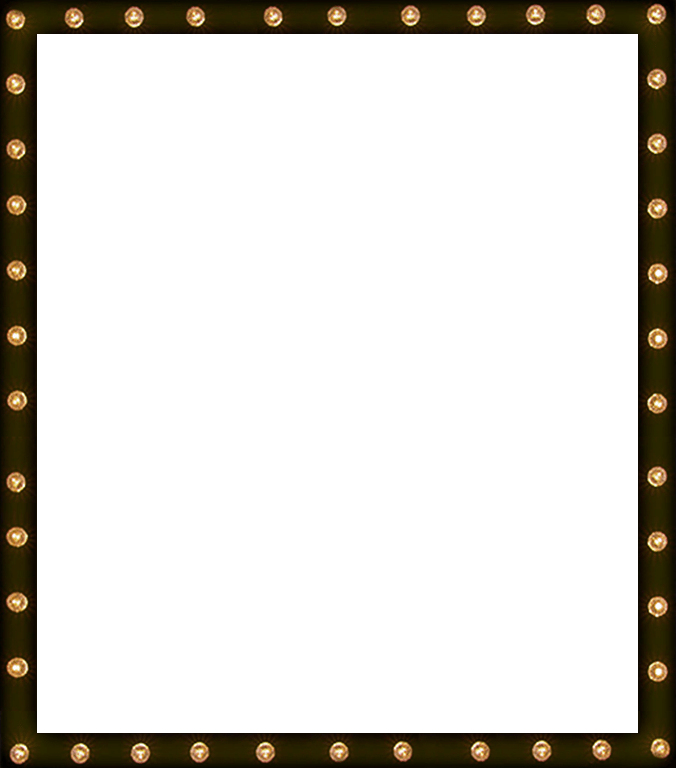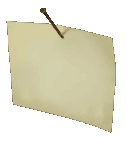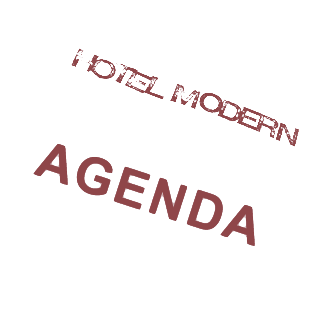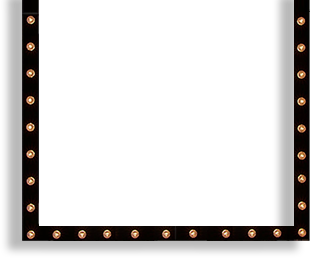They have already made a performance about the First World War. Now Hotel Modern turn their attention to Auschwitz. Using 3000 puppets. 'It' …








The abyss of the human soul. Hotel Modern talk about Auschwitz (interview)
They have already made a performance about the First World War. They have now turned their attention to Auschwitz. Using 3000 puppets. ‘It’s up to us to to tell the story now, not the old people any more.’
Music can be heard, and a small marching band comes into view. Slowly, the camera zooms in on the tuba doing its level best to play Strauss’ Radetzky March. After a short while, the orchestra disappears but the music blares on. It no longer sounds cheerful. Men in prison stripes are pushed into the yard through the entrance emblazoned with the words Arbeit macht frei. It is roll call in Auschwitz.
‘An intravenous camera would be handy,’ says Herman Helle as he gasps for breath. For at least fifteen minutes he has been shuffling around his scale model -squatting – with camera and cables. Along the barracks, the huts, the old crematorium, the new crematorium being constructed, and back once more, through masses of people (living and dead), past the watchtower to the entrance in front of the word STOJ, halt.
Herman Helle is a big man but somehow he easily slips from view. You see the camp on the stage, you see the meticulously filmed images of it that Helle is making, and that are projected on the rear screen. This new performance by the Rotterdam theatre group Hotel Modern is physically gruelling. It is the first time the group do stomach muscle exercises every morning. But that is hardly the most important thing. The most important thing is Kamp, the project that has occupied them day and night for seven months.
It is unmistakably in Hotel Modern style. For the past nine years, visual artist Herman Helle (1953) and theatre makers Pauline Kalker (1968) and Arlene Hoornweg (1969) have been making their trademark, original form of theatre in which film, visual art, mime and music play equal parts, and scale models and puppets reflect the world and its inhabitants. They call it ‘live animation’. All three members are continually present on stage during the performance – usually as manipulators: they have everything – strings, cables, cameras – under control.
In City Now they portrayed life in a big city, in Snail Trails they explored the mind of an Alzheimer sufferer, and last season they presented the inferno of 9/11 in The Man with Five Fingers. They established their name in 2001 with The Great War, a performance about the First World War.
‘The audience chuckles [and] is also deeply impressed,’ wrote reviewers, and, ‘This is the only style appropriate for making the unimaginable bearable.’ They are still performing it throughout Europe – next month in Poland.
And now it is Auschwitz’ turn. Kamp. The words ‘The performance contains shocking images’ are printed on the flyer. And it is true. But there are also beautiful, impressive, quiet images. As the flyer itself illustrates with its photo of a camp prisoner with an overly large shovel in his hands. It looks like it would require enormous strength to lift and use it. Hotel Modern made another three thousand puppets just like it. More even. And each powerfully expressive, even among so many others. And with, remarkably enough, undiminished individuality.
After the rehearsal in the Studio in Rotterdam, the three members explain how it took a long time before they dared to really take it on, to tackle this emotionally charged theme of genocide, this disaster of biblical proportions, this historical drama, this true story. They read up on it, discussed, researched. And they doubted, cried and dawdled. They parried sceptical reactions (there were more than enough of those) and did it nonetheless.
But before this there was a ‘prologue’ incorporated into The Man with Five Fingers, which consisted of short episodes. The camp episode was a short one, a tribute to Josef Emanuel Kalker, a mild-mannered Jewish man and an able general practitioner, who went into hiding but was betrayed and had to clean toilets in Auschwitz’ medical barracks. He died one month after his arrival on 1 October 1943. He was Hotel Modern member Pauline Kalker’s grandfather.
The concept for Kamp preceded even the plan for the abovementioned episode. But with it, the step towards the realisation of CAMP seemed smaller. ‘That’s when we made our first barrack,’ says Hoornweg, and Kalker adds, ‘Our performances often begin with form.’
Helle: ‘In The Great War, the audience, for the most part, watches a film. A film we make, – right there and then. So all the scenes are rigged up on the table and then we point the camera at it. We want to do it differently in this one: you should look at the camp itself too. It’s impossible to make models of everything – the complex is too large for that. This is an amalgamation of Auschwitz and Birkenau. The first question was: What has to be in it? And so everyone made lists. Eating, sleeping, working, a train arrives, people sweep. On first impressions you could think you were watching a village with tidy inhabitants – a lot of clearing up went on in Auschwitz. And then the perspective shifts and we see the roll call, the gallows, gas chambers.
There are no lines spoken. But there are sounds. Kalker: ‘We thought long and hard about sound,’ says Kalker, ‘Thought about silence too. We don’t want to use people’s screams. ‘No! That’s kitsch, or plain wrong,’ concurs Hoornweg, and that wouldn’t evoke the feeling anyway.’ A little later Hoornweg adds, ‘It’s impossible for us to grasp the full horror, too. It’s the abyss of the human soul.’ Before they had even begun they was subjected to reactions characterised by reservations and mistrust: ‘Do you really think you should?’; ‘We’ve heard it all
before’; ‘I suppose it’ll be sentimental’; ‘The subject matter is far too heavy for a performance.’ Kalker: ‘It really upset me. It seems like denial, doesn’t it? Helle: ‘People are scared of it.’ Hoornweg: ‘I have to take a deep breath sometimes, that’s true. But I see it as ‘historical repertoire’. Six million dead, and only 60 years ago. The holocaust is a benchmark, it changed the way we look at war, at genocide, at humankind. “Never again” everyone said. Unfortunately it’s all too topical. Universal.’
A silence descends.
Helle: ‘I never thought “Why am I doing this?” I always felt the need to do it.’
Kalker: ‘Why’s that?’
Helle: ‘Because it happened.’
Hoornweg: ‘And because you should remember it.’
Kalker: ‘Yes. That is important. As far as I’m concerned, people really don’t have to think about Auschwitz every day, but – well yes, it’s up to people themselves what they think. But it’s important to me to – literally and figuratively – hold what happened up to the light. And, as theatre makers, to share that with your audience. It’s just that it’s also very scary. Because what you’re sharing with each other is horrible. That makes it more tense than previous performances in a different way.’
A momentary pause and then ‘Until now I’ve only sucked the story in through books, film, TV. I’ve been in Auschwitz-Dachau. Now I feel the need to pass on what I’ve found out. I feel responsible. We should tell the story now, not the old people any more
Hoornweg: ‘Tell stories about the world we live in. A true story, heard from people who lived through it.’
They had extensive conversations with five survivors. Nonetheless, it turned out to be difficult to get a good overall view. As Helle says, ‘Every book or document said something different. Survivors said different things. Because the camp was divided in lots of sections, and nobody left his allotted terrain, nobody knew what was going on three stretches of barbed wire away. So, yes, it was a long time before we had any idea of the complete picture.’
The scale model was already pretty much complete when they decided to go to Auschwitz. ‘It was me in particular that needed to go,’ explains Helle, ‘We’d looked in books, photos, documentaries, drawings, ground plans. You couldn’t help getting the feeling like “I’m reworking pictures. I’m trying to imagine things, but it exists. It’s there. I have to go there. I have to know to be able to imagine it.”‘ Their conversations with survivors echoed in their minds. They had said matter-of¬factly ‘Oh, then as you go through the gate look to the right and you’ll see my barrack.’ ‘By then we knew where your grandfather had been,’ says Helle. ‘Yes, I found that out,’ adds Kalker, ‘”Overwhelming” doesn’t really do it justice. But it was also a strange experience, in a way.’ Kalker: ‘The scale model!’ Helle: ‘I’d made it from photos, with a feeling like “That’s how it must have been.”‘ And then you get there, and it’s just standing there. A gigantic great scale model. Absolutely astonishing. “It’s right. We got it right after all!” Bizarre.’ Kalker: ‘But gradually…’ Helle: ‘Sooner.
Kalker: ‘The scale model isn’t the issue any more.’ Helle: ‘It beat the scale model.’
After their return they were joined by a team of puppet makers, and this helped during dark days. ‘We could share our sense of dislocation,’ explains Hoornweg, ‘You thought “What a mad enterprise” sometimes. Making all those puppets. And then again, the real situation was far more insane: all those puppets represent all those people! That was a link that kept returning. And a good thing it did too.’
‘So you don’t become completely alienated from the subject and fall into the trap of just having a nice time tinkering around and being sociable,’ adds Helle, ‘Because making the models is great fun. But sooner or later the moment comes [fingersnap]: three thousand puppets. Yes. And 1.2 million people were killed here – we have to represent that on a massive scale. We’re not the mad ones.’ They are lying on the stage floor, in the dressing-room, there is a box of extra parts on the table; everywhere you look there are tiny puppets, three or four inches high. ‘You start with a wire frame figure, you dress it, with pieces of material,’ explains Helle, ‘and then you make it dirty, with ash, a burn here and there. The whole getup has to be shabby, filthy.’ ‘Marmite,’ interjects Kalker, ‘that stains well.’ ‘And then the head.’ Each one different from the others.
‘Do you have enough dead people?’; ‘Do you know where they have to lie?’; ‘Herman, can you help me lay the bodies?’: they have become familiar, routine questions.’Can you have a look how many SS men you need?’ Right from the outset, Hoornweg was determined she would not reach that point. ‘But after a while, it’s true, you’re just occupied with the practical side of things and you just talk that way about bodies. You go on tour with the performance. The whole thing has to be well organised, that’s what we told each other. Selecting. The figures. And they had to be numbered, don’t forget. Each one had a number. Dear God, what a weird parallel. Not to be too holier-than-thou about it, though. I mean we’re talking about a theatre performance here. A performance about something that happened in the past, something that will be there for ever, and is gone forever.’ ‘Sometimes I’m shooting something with the camera,’ adds Helle, ‘and I think “Damn, that’s it: everyone knows that image”. A fragment, a photo stored in the collective memory. It doesn’t even have to be from Auschwitz. A universal image of conflict, of a person in distress. An image like that strikes home.’ ‘We try to astonish’, says Hoornweg ‘A particular way of looking at something you thought was familiar – so you truly see it afresh. It’s got a lot to do with the playfulness of the puppets, they’re also sort of ungainly. In the performance one of them gets beaten with a stick in a certain way and you think “That looks a bit clunky” but at the same time you realise that someone’s being beaten to a pulp.’That works well as theatre I think. You sit there watching this pixie world that relates in surprising ways to knowledge you already have.’ And Kalker adds, ‘I think the very nature of the performance allows you to take a certain distance from it.’
‘Sometimes you’re looking over someone’s shoulder, and then you’re suddenly among the people or you see the camp from a distance. The changing perspective gives you the feeling of having a bird’s eye view, it gives you depth without the oppressive atmosphere ever becoming suffocating. ‘You can identify with different people by turns,’ says Helle. And Hoornweg adds, ‘We don’t use words, either. We felt that that was the most potent in the end. You don’t hear what anyone thinks or feels and that means that as an audience member you remain an observer. A silent witness.’
10-11-2005






















